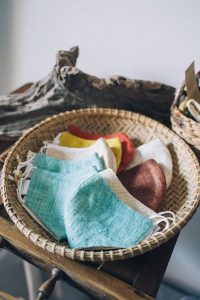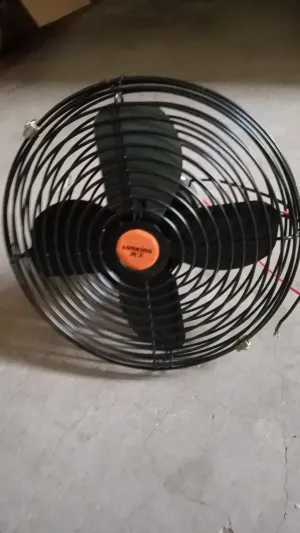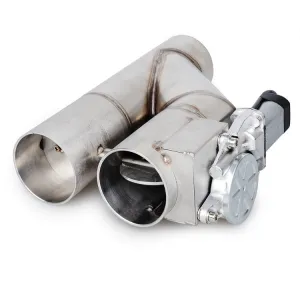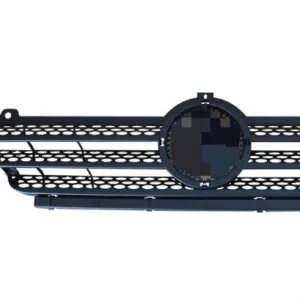Non-woven fabrics, also known as non-woven fabrics, needle-punched cotton , needle-punched non-woven fabrics , etc., are produced from polyester fiber , polyester fiber (referred to as: PET) and are made through a needle- punching process. They can be made into different thicknesses, feel, Hardness etc.
Non-woven fabrics are moisture-proof, breathable, flexible, lightweight, flame-retardant, non-toxic and odorless, low-priced, and recyclable . Can be used in different industries, such as sound insulation, heat insulation, electric heating sheets , masks, clothing, medical, filling materials , etc.

Features #
Non-woven fabrics have no warp and weft lines , making them very convenient for cutting and sewing. They are also lightweight and easy to shape, making them very popular among craft enthusiasts.
Because it is a fabric that does not require spinning or weaving. It just orients or randomly arranges short textile fibers or filaments to form a fiber mesh structure, and then uses mechanical, thermal bonding or chemical methods to reinforce it.
It is not made up of yarns interwoven and knitted together one by one , but the fibers are directly bonded together through physical methods. Therefore, when you get the sticky lining in the clothes , you will find that it is a drawstring. Not a single thread comes out. Nonwovens break through traditional textile principles and have the characteristics of short process flow , fast production rate , high output, low cost, wide use, and multiple sources of raw materials.
The relationship between non-woven fabrics and spunbond fabrics
Spunbond fabrics and non-woven fabrics are subordinate . There are many production processes for the manufacture of non-woven fabrics. The spunbond method is one of the non-woven fabric production processes (including spunbond method, melt-blown method , hot rolling method, and spunlace method. Most of them on the market now use Non-woven fabrics produced by spunbond method)
Depending on the composition, non-woven fabrics include polyester, polypropylene , nylon , spandex , acrylic, etc.; different compositions will have completely different styles of non-woven fabrics. Spunbond fabric usually refers to polyester spunbond and polypropylene spunbond; the styles of these two fabrics are very close and can only be distinguished through high-temperature testing.
Non-woven fabric is a kind of non-woven fabric . It directly uses polymer slices, short fibers or filaments to form the fibers into a web through airflow or machinery , and then undergoes hydroentanglement, needle punching , or hot rolling reinforcement, and finally undergoes post-finishing Formed without woven fabric. New fiber products with soft, breathable and flat structure have the advantage of not producing lint, being strong, durable and silky soft. They are also a type of reinforcing material and have a cotton feel. Compared with cotton fabrics , non-woven products Cloth bags are easy to shape and cheap to make.
advantage: #
1. Lightweight: Polypropylene resin is used as the main raw material, with a specific gravity of only 0.9, only three-fifths of cotton. It is fluffy and feels good.
2. Soft: It is composed of fine fibers (2-3D) and is formed by hot-melt bonding. The finished product has moderate softness and comfort.
3.Water-repellent and breathable: Polypropylene chips do not absorb water and have zero moisture content . The finished product has good water-repellency. It is composed of 100% fiber and is porous and breathable . It is easy to keep the cloth surface dry and easy to wash.
4. It can purify the air and take advantage of the small holes to keep bacteria and viruses out.
5. Non-toxic and non-irritating: The product is produced with FDA food-grade raw materials, does not contain other chemical ingredients, has stable performance, is non-toxic, has no peculiar smell, and does not irritate the skin.
6.Antibacterial and anti -chemical agents : Polypropylene is a chemically blunt substance, not insect-eaten, and can isolate bacteria and insect erosion in liquids; anti-bacterial and alkali-resistant , the strength of the finished product will not be affected by erosion.
7.Antibacterial properties . The product is water-repellent and does not become moldy. It can isolate bacteria and insects in the liquid and prevent it from becoming moldy.
8. Good physical properties. It is made of polypropylene spun directly laid into a mesh and thermally bonded. The strength of the product is better than that of ordinary short fiber products. The strength has no directionality and the longitudinal and transverse strength is similar.
9. In terms of environmental protection, the raw material of most non-woven fabrics used is polypropylene, while the raw material of plastic bags is polyethylene . Although the two substances have similar names, they are very different in chemical structure . The chemical molecular structure of polyethylene is quite stable and extremely difficult to degrade, so it takes 300 years for plastic bags to decompose completely; while the chemical structure of polypropylene is not strong and the molecular chains can be easily broken, thus it can be effectively degraded , and enters the next step of environmental recycling in a non-toxic form. A non-woven shopping bag can be completely decomposed within 90 days. Moreover, non-woven shopping bags can be reused more than 10 times, and the environmental pollution after disposal is only 10% of that of plastic bags.
shortcoming: #
1. Compared with textile cloth, it has poorer strength and durability .
2. Cannot be washed like other fabrics.
3. The fibers are arranged in a certain direction, so they are easy to split at right angles, etc. Therefore, the improvement of production methods is mainly focused on the improvement of preventing splitting.
use #
Non-woven products are colorful, bright, fashionable and environmentally friendly, widely used, beautiful and elegant, with various patterns and styles. They are also lightweight, environmentally friendly and recyclable. They are internationally recognized as environmentally friendly products that protect the earth’s ecology. Suitable for agricultural film , shoemaking, tanning, mattresses, quilts , decoration, chemicals, printing, automobiles, building materials, furniture and other industries, as well as clothing linings, medical and health disposable surgical gowns , masks, caps, bed sheets, hotels Disposable tablecloths , beauty, sauna and even today’s fashionable gift bags , boutique bags, shopping bags , advertising bags , etc. Environmentally friendly products, versatile and economical. Because of its pearl-like appearance, it is also called pearl canvas .
Non-woven fabrics are made of chemical fibers and plant fibers on wet or dry paper machines using water or air as the suspension medium. Although they are cloth without weaving, they are called non-woven fabrics. Non-woven fabrics are a new generation of environmentally friendly materials that have the advantages of strong strength, breathability and waterproofing, environmental protection, flexibility, non-toxic and odorless, and low price. It is a new generation of environmentally friendly material that is water-repellent , breathable, flexible, non-combustible, non-toxic and non-irritating, and rich in color. If this material is left outdoors and decomposes naturally, its maximum lifespan is only 90 days. If it is left indoors, it will decompose within 8 years. It is non-toxic and harmless when burned, and does not pollute the environment, so it is environmentally friendly.
(1) Medical and sanitary non-woven fabrics: surgical gowns, protective clothing , disinfection wraps, masks, diapers, civilian rags, wipes , wet facial wipes, magic towels, soft towel rolls , beauty products, sanitary napkins , sanitary napkins Pads , disposable sanitary cloths, etc.
(2) Non-woven fabrics for home decoration: wall coverings , tablecloths , sheets, bedspreads, etc.
(3) Non-woven fabrics for clothing: linings, adhesive linings , wadding , shaped cotton, various synthetic leather base fabrics, etc.
(4) Industrial non-woven fabrics; base materials, reinforcing materials, polishing materials , filter materials, insulation materials , cement packaging bags, geotextiles, covering cloths, etc. for roof waterproofing membranes and asphalt tiles.
(5) Non-woven fabrics for agriculture: crop protection fabrics, seedling raising fabrics, irrigation fabrics, thermal insulation curtains, etc.
(6) Other non-woven fabrics: space cotton , thermal insulation and sound insulation materials , linoleum-absorbing felt , cigarette filters , tea bags, shoe materials, etc.
Medical and health care: surgical gowns, caps, covers, plaster cotton wool , women’s sanitary napkins, baby diapers, wet wipes, sanitary underwear, dust covers , masks.
Agriculture: harvest cloth , greenhouse cloth.
Industry: floppy disk lining, speaker cloth, filter material, speaker sound insulation felt , sealing ring lining, cable cloth, FRP reinforced towel, industrial wipes, anti-vibration lining , insulation material, tape base lining, pipe base lining, ventilation duct , Sharpei cloth.
Packaging: composite cement bags, luggage linings, packaging base linings, quilt batting, storage bags, mobile jacquard luggage fabrics.
Clothing and shoemaking: clothing linings, wadding, hard toe linings, heel linings, underwear, artificial deerskin , synthetic leather, warm shoe linings, cloth sole linings.
Automotive industry : waste textile insulation thermal felt, anti-shock felt, headliner, seat cushion lining, carpet, door lining, car filter element , molded seat cushion.
Household clothing: sofa upholstery, carpets, wall coverings, mirror cloths, tea bags, vacuum cleaner filter bags, shopping bags, printed sheets, entertainment covers, cushions, sleeping bags, dry cleaning cloths, scouring pads , curtains, tablecloths, Lampshade , back of rattan mat covered with film.
Civil engineering , construction: reinforcement, reinforcement , filtration, linoleum felt base fabric, drainage board , roof waterproofing materials, railways, highways, berms , water slopes, port sound insulation, sewers , heat protection, separation, drainage.
Other uses: launch vehicles , missile head heat-proof cones, tail nozzle throat linings, high-grade banknote printing paper, space shuttle heat-resistant tiles, map cloth, calendar cloth, artificial cloth, canvas , etc.

 April 1, 2024
April 1, 2024 










